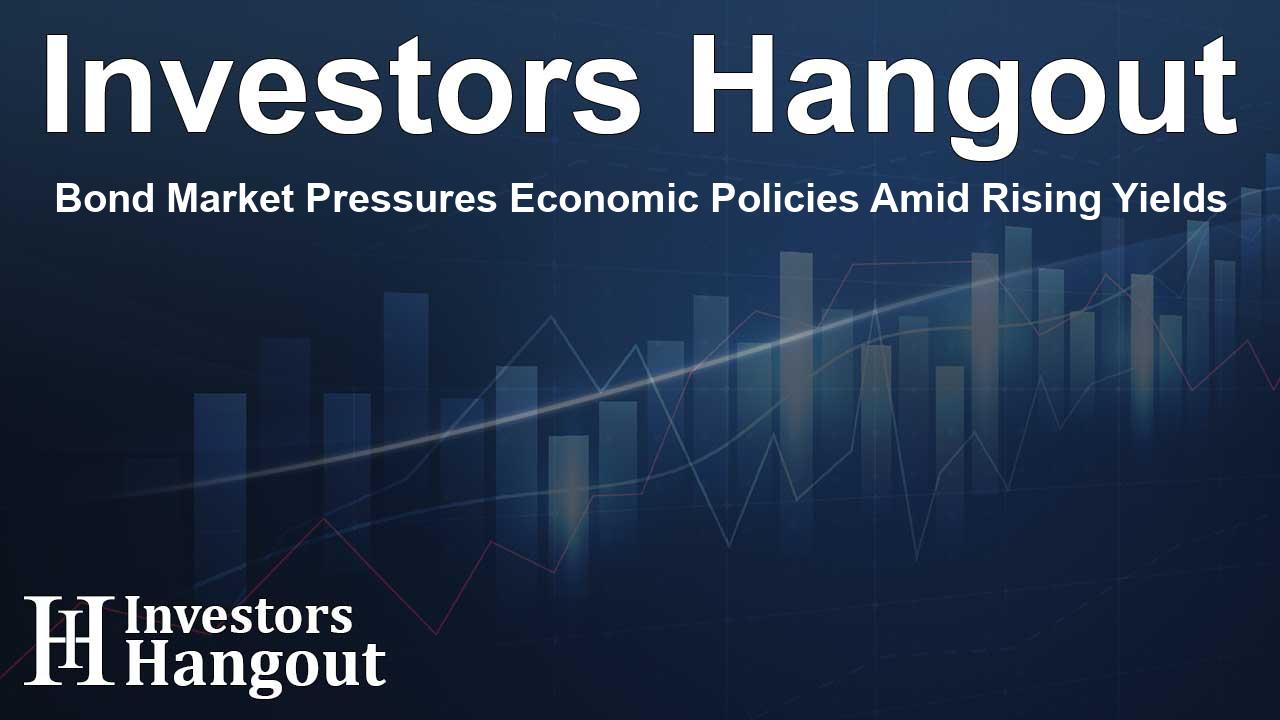Bond Market Pressures Economic Policies Amid Rising Yields

Introduction to Current Bond Market Dynamics
The U.S. bond market is revealing critical messages not just for Wall Street, but also for policymakers as Treasury yields near levels not observed for nearly twenty years. This scenario presents significant challenges for the forthcoming administration under Donald Trump.
Understanding Yield Trends
The yield on the 10-year Treasury has dramatically risen by over 1% since September, flirting with the crucial 5% mark. This steep climb in borrowing costs is a result of shifting market expectations surrounding Federal Reserve rate cuts that have emerged in light of more robust economic data.
Market Overview
Anna Wong, chief U.S. economist at Bloomberg Economics, highlights that this phenomenon stems from a repricing of expectations regarding Federal Reserve rate cuts, linked to improved economic forecasts. This situation has led to a hike in real rates, signifying a critical moment for the financial market.
Impacts on Policy Implementation
The bond market's fluctuations are closely tied to anticipated policies that could come from the Trump administration, encompassing plans for tariffs and increased immigration controls. Wong emphasizes that these proposed policies are already exerting pressure on the economy, setting up potential conflicts within the legislative framework.
Political Considerations
In Congress, the implications of rising yields could spark extensive discussions, especially given the narrow Republican control in both chambers. Economic policy experts such as Kate Davidson from Bloomberg suggest that anxious lawmakers might complicate the implementation of Trump's economic agenda, particularly concerning tax cuts and the overall approach to deficit spending.
Forecasting Yield Movements
Mohamed El-Erian, Chief Economic Advisor at Allianz, indicates that the 10-year yields could hover consistently between the 4.75% to 5% range throughout the upcoming years. This forecast brings to light pressing questions surrounding fiscal sustainability as debt servicing costs surpass critical spending areas such as defense.
Understanding Economic Consequences
While Trump has lauded the $3 trillion surge in the stock market since his election, the dynamics within the bond market suggest increasing hurdles for his economic strategies. Leading financial analysts, including Larry Tentarelli from Blue Chip Daily Trend Report, predict sustained elevated rates in the near future, forecasting yields to remain in the 4.50% to 5.00% band well into early 2025.
Interest Rates and Economic Sentiment
As yield levels rise, members of the Federal Reserve express considerable uncertainty regarding the economic landscape. Recent meeting minutes disclosed a repeated use of the term "uncertain" by officials, emphasizing the complex nature of the current economic situation.
Conclusion
The interplay between rising Treasury yields and the anticipated policies from the incoming administration sets the stage for a tumultuous period ahead. Close attention to these market signals will be essential for stakeholders in the economic and financial landscapes as they navigate this evolving scenario.
Frequently Asked Questions
What factors are driving the rise in Treasury yields?
The increase is largely attributed to adjustments in market expectations regarding the Federal Reserve's future rate cuts due to improved economic indicators.
How do rising yields affect economic policy?
Higher yields increase borrowing costs, which may hinder the implementation of tax cuts and other economic policies proposed by the incoming administration.
What is the outlook for the 10-year Treasury yields?
Experts predict that the yields could stabilize in the 4.75% to 5% range across upcoming years, indicating a sustained period of elevated borrowing costs.
How might Congress react to rising yields?
With slim Republican majorities, rising yields may prompt lawmakers to scrutinize and potentially challenge the implementation of the new economic policies.
What are the implications of increased borrowing costs for the economy?
Escalating borrowing costs could lead to greater fiscal pressure and impact federal spending priorities, raising questions about overall economic sustainability.
About Investors Hangout
Investors Hangout is a leading online stock forum for financial discussion and learning, offering a wide range of free tools and resources. It draws in traders of all levels, who exchange market knowledge, investigate trading tactics, and keep an eye on industry developments in real time. Featuring financial articles, stock message boards, quotes, charts, company profiles, and live news updates. Through cooperative learning and a wealth of informational resources, it helps users from novices creating their first portfolios to experts honing their techniques. Join Investors Hangout today: https://investorshangout.com/
Disclaimer: The content of this article is solely for general informational purposes only; it does not represent legal, financial, or investment advice. Investors Hangout does not offer financial advice; the author is not a licensed financial advisor. Consult a qualified advisor before making any financial or investment decisions based on this article. The author's interpretation of publicly available data shapes the opinions presented here; as a result, they should not be taken as advice to purchase, sell, or hold any securities mentioned or any other investments. The author does not guarantee the accuracy, completeness, or timeliness of any material, providing it "as is." Information and market conditions may change; past performance is not indicative of future outcomes. If any of the material offered here is inaccurate, please contact us for corrections.